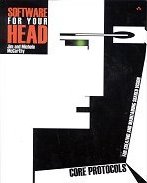There are oodles of books about teamwork, about showing mutual respect, about the importance of a shared vision. This one is different, because it casts the whole process in terms of Patterns and Protocols -- Patterns like CheckIn, Pretend, Decider, EcologyOfIdeas, and Investigate, to structure the process and give the team a shared understanding and vocabulary, and Protocols to give step-by-step guidance on how to achieve the Patterns. There are also AntiPatterns, like NoHurtFeelings, TeamQuackery, and Technicality, to help avoid common pitfalls. These Patterns and Protocols have been developed over the years, with experiments to make them better, and with the use of BootCamps to teach them.
It takes a while to get into the argument, because the book seems to start at around chapter 2, as if I had missed the introduction explaining what the purpose is. Then it just stops, a chapter too early, with no rounding up of conclusions. Additionally, there are very few concrete examples of what the outputs of the various Patterns are, which makes it difficult to get a handle on what is being described. A few real examples of some of the more novel Patterns, such as a PersonalAlignment statement, or a Metavision, would help enormously.
Some of the explanations behind various Patterns and Protocols use rather too much psychobabble for my taste, although the Patterns and Protocols themselves seem sensible and practical. One of the few concrete examples the authors provide is of Genius, and they list Darwin, Freud and Einstein. Darwin and Einstein I have no problem with, but I think it is appropriate that my spellchecker suggests "Fraud" as a correction for Freud.
So, summarising in terms of the PerfectionGame Protocol: What I like about the book is the well-defined Patterns, Protocols and Core Lexicon. What it would take to be perfect is a better context setting, concrete examples of each of the ideas being discussed, and less psychobabble.
